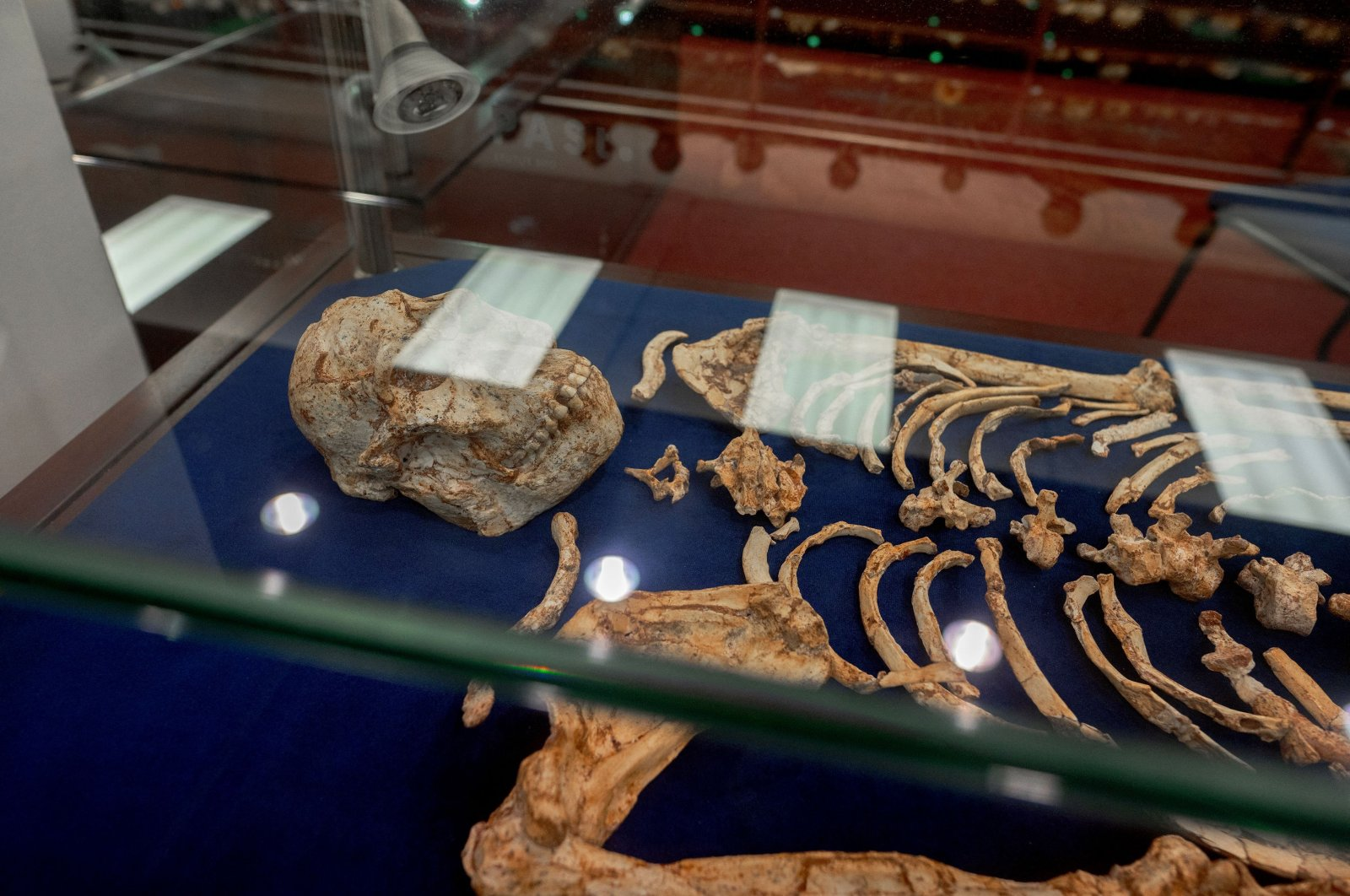
Bones of an Australopithecus Africanus in a shrine at the Center for Exploration of the Deep Human Journey, Wits University, in Johannesburg, South Africa, May 11, 2023. (AFP Photo)
Pretoria, June 9 (RHC)-- Palaeontologists in South Africa said they have found the oldest-known burial site in the world, containing remains of a small-brained distant relative of humans previously thought incapable of complex behaviour.
Led by renowned palaeoanthropologist Lee Berger, researchers said on Monday that they discovered several specimens of Homo naledi – a tree-climbing, Stone Age hominid – buried about 30 metres (100 feet) underground in a cave system within the Cradle of Humankind, a UNESCO World Heritage Site near Johannesburg.
The findings challenge the current understanding of human evolution, as it is normally held that the development of bigger brains allowed for the performing of complex, “meaning-making” activities such as burying the dead.
The oldest burials previously unearthed, found in the Middle East and Africa, contained the remains of Homo sapiens – and were around 100,000 years old. Those found in South Africa by the research team led by Berger, whose previous announcements have been controversial, date back to at least 200,000 BC.
“Homo naledi tells us we’re not that special,” Berger, a United States-born explorer, told AFP news agency. “We ain’t gonna get over that.”
Homo naledi, a primitive species at the crossroads between apes and modern humans, had brains about the size of oranges and stood about 1.5m (5 feet) tall. With curved fingers and toes, tool-wielding hands and feet made for walking, Homo naledi was discovered in 2013 by Berger, helping upend the notion that our evolutionary path was a straight line.
The species is named after the “Rising Star” cave system where the first bones were found in 2013. The oval-shaped interments at the center of the new studies were also found there during excavations started in 2018.
The holes, which researchers say evidence suggest were deliberately dug and then filled in to cover the bodies, contain at least five individuals. “These discoveries show that mortuary practices were not limited to H. sapiens or other hominins with large brain sizes,” the researchers said.
The burial site is not the only sign that Homo naledi was capable of complex emotional and cognitive behaviour, they added. Berger’s earlier discoveries won the interest of National Geographic, which named him “explorer in residence” and featured his work in television shows and documentaries.
The latest research has not been peer-reviewed yet and some outside scientists think more evidence is needed to challenge what we know about how humans evolved their complex thinking. “There’s still a lot to uncover,” said Rick Potts, director of the Smithsonian’s Human Origins Program, who was not involved in the research.

